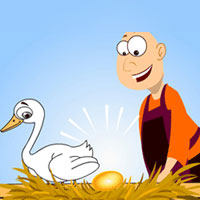Best Short Stories for Kids
Popular Short Stories
Bedtime Short Stories
Bible Short Stories
Christmas Short Stories
Fairytale Short Stories
Funny Short Stories
Moral Short Stories
Read-Aloud Short Stories
Stories From The Panchatantra Tales
Popular Simplified Myths And Legends Stories
Short Stories in English About Children
Enter a world that is imaginative, educational and enjoyable! The short stories we have compiled on children are designed in such a way that they stimulate the imagination and character excellence as well as enhance reading ability. Short stories in English or simple children stories or little English stories or even small bedtime stories: you have all of those here.
They are simple to read with exquisite and colorful writings with life lessons. Ranging in length from kindergarten short stories to slightly longer stories told to older kids, each story is intended to be entertaining, as well as to enlighten the understanding of kindness, honesty, courage, and friendship.
The Question Is, Why Read Short Stories to Children!
- Easy to read: They are in simple forms of language and thus appropriate to the young readers.
- Values: In every story there are morals that build character.
- Develops reading habit: These are short and interesting, which arouses interest in little ones.
- Ideal for bedtime: Short books that make children relax before they go to bed.
The kind of Stories you will find
- Children's Short Stories in English - Fun, Easy to read stories.
- Small English Stories - Short, sweet and just right to read quickly.
- Stories Kindergarten - Early childhood stories on colorful characters.
- Best Short English Stories - Selected popular stories that kids like.
- Easy short stories in English - Easy stories to read by children just learning to read.
To Whom Are These Tales?
- Parents in search of bedtime stories.
- Teachers in need of reading texts in the classroom.
- Children that care about adventures, fairy tales and moralized tales.
- Entry level English students seeking educational material that is interesting and a bit on the challenging side.
Aspects of Our Children's Stories
- Brief and entertaining (Ideal read on 5 minutes)
- Easy to learn as the English language is available.
- Very good combination of timeless stories and original stories
- Targets the ages of 3 to 12
Frequently Asked Questions (FAQs)
1. Which are the most appropriate children's short stories?
The Thirsty Crow, The Honest Woodcutter and The Lion and the Mouse are of the moral stories that make compilations of the best short stories in the English language to children. These fables are everlasting and simple to interpret.
2. What are the typical word count requirements in a children's short-story?
A children's short story occupies a reading time of 3-5 minutes, thus; it is ideal to be read during bedtime or as part of a quick classroom activity.
3. Do short stories teach children to speak English?
Yes! It enhances word knowledge, sentence patterns and understanding of the short English stories, particularly in the case of new learners.
4. Are such stories appropriate to kindergarten children?
Absolutely. We produce a special and distinct category of short story books in very simple English, very simple words and lovable characters in kindergarten stories.
5. Which is reason enough to use short stories rather than long?
Short stories simply hold on to young readers without exhausting them. They can easily be employed in day-to-day activities by the parents and the teachers also.
Get started reading our collection of short stories in English today for kids the best combination of fun, imagination, and learning!
Was this article useful? What should we do to improve your experience? Share your valued feedback and suggestions! Help us to serve you better. Donate Now!


































































































